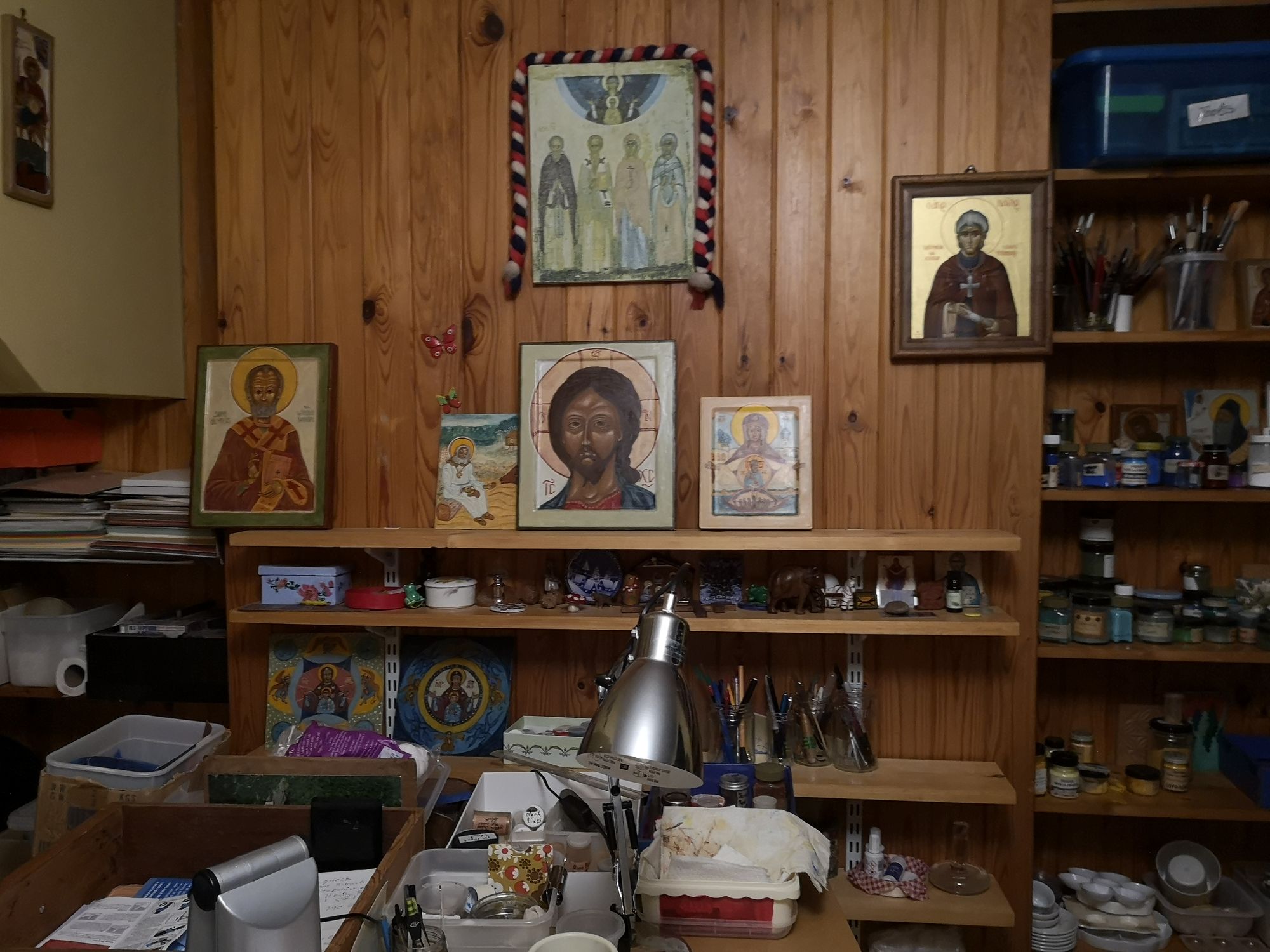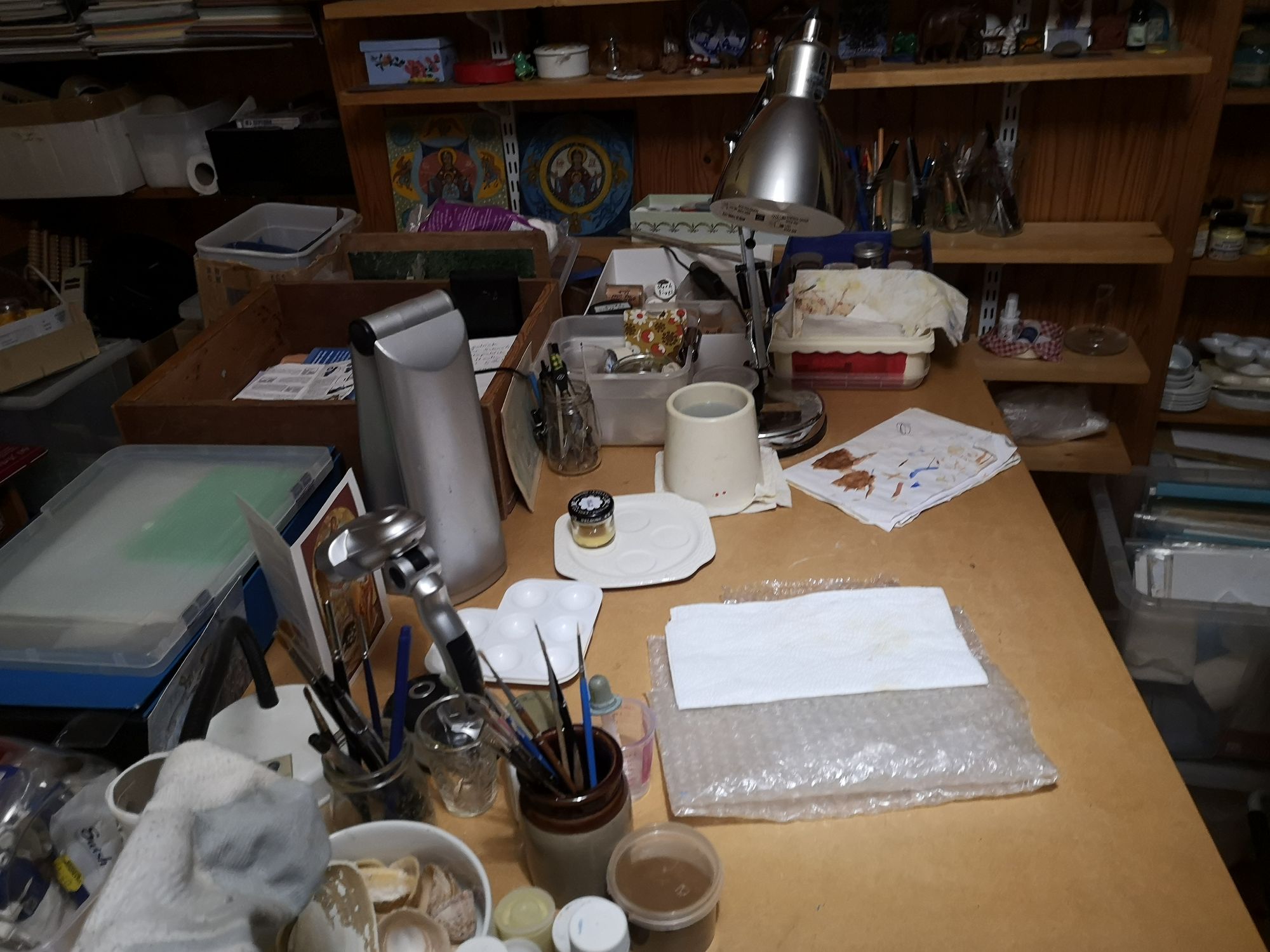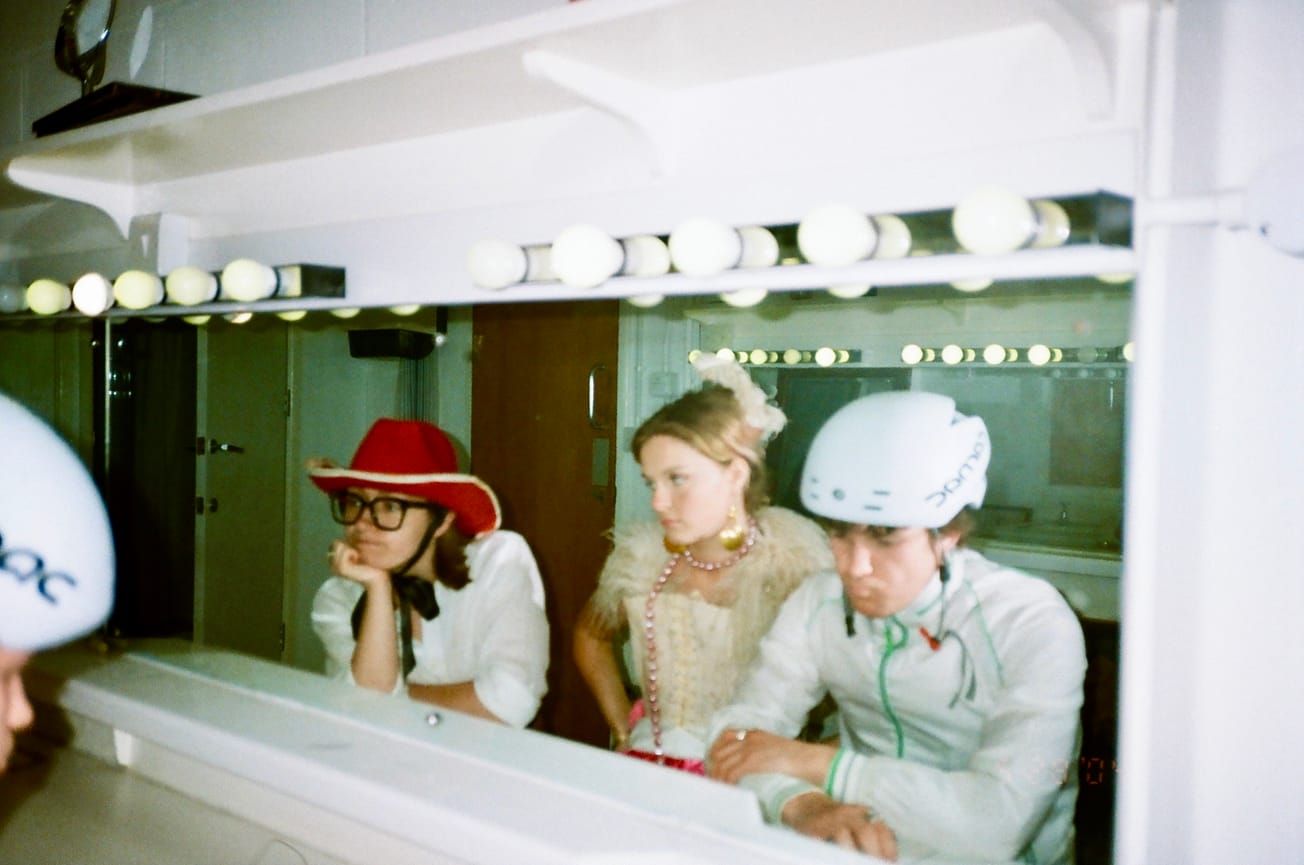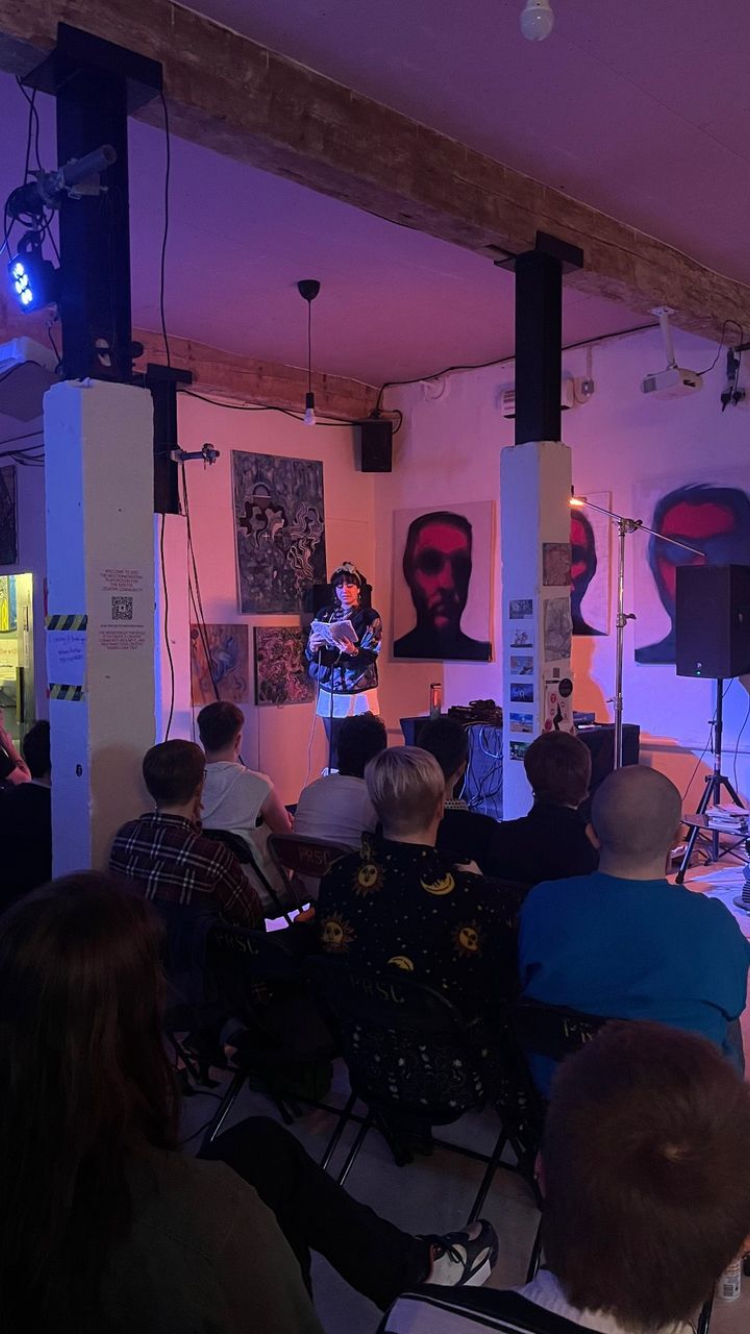By Milan Perera, Arts Critic Columnist
Icon origins are found in a hazy past where the history is often interchangeable with legends and myths. This blurred line adds further mystique to this traditional art medium which has been evolving for the last two thousand years, but never loses its original essence or ethos. The icon painter is considered a mere conduit for a ‘Higher Realm’ rather than a celebrity to be showered with adulations.
It is often painstaking and the very definition of the ‘labour of love’ as every brush stroke is accompanied with reflection and prayer. The icons are described as ‘Windows to the Heaven’ due to their latent spirituality ready to be harnessed.
According to traditions, the first icon was painted by St. Luke in the first century of the Common Era. Though there is no evidence to substantiate this claim, writings began to appear with devotional fervour for the next few centuries on the subject. The icon attributed to St. Luke is widely known as Our Lady of Perpetual Succour in Western Europe, while in Eastern Europe, which is predominantly Orthodox Christian, it is known as Hodegetria because the original was displayed in the Monastery of the Panaghia Hodegetria in Constantinople, modern day Istanbul.

This is one of the most immediately recognised icons which features the Blessed Virgin holding infant Jesus. It is one of the most reproduced icons which enjoys a ubiquitous status. The account of St. Luke’s involvement with the first icon has an enduring legacy due to St. Luke’s immediate connection to the first group of Jesus’ disciples and Mary, mother of Jesus. He is also one of the four Evangelists who chronicled the life of Jesus with a disarming intimacy. Ironically, Dante Gabriel Rosetti, one of the pioneers of the often-iconoclastic art movement, the Pre-Raphaelite Brotherhood, was full of glowing remarks for St. Luke on his sterling attempt:
“Give honor unto Luke Evangelist;
For he it was (the aged legends say)
Who first taught Art to fold her hands and pray.
Scarcely at once she dared to rend the mist
Of devious symbols,”
Another well-known icon is The Trinity (the Hospitality of Abraham) by the 15th century Russian iconographer Andrei Rublev. Its geometry, symbolism and the layout have been the subject of rigorous analysis down the centuries.
Icons feature a specific aspect of Christian theology, such as the Trinity or an individual (the Christ or saints). They are found in both public places of Christian worship, and at homes of the faithful. Icons are mostly associated with the Orthodox Christian faith, as in countries such as Russia, Ukraine, Romania, Bulgaria, and Greece. However, icons are hardly the reserve of Orthodox Christianity as many Roman Catholic and Anglican churches accommodate icons in a space of veneration.

The painting of icons is no mere pastime in Orthodox countries, but a carefully codified school of painting where there is a universal consensus on the colour palette, conception, structure, and execution. In Great Britain there are graded courses on iconography and less rigorous icon painting workshops always in appropriate settings of quiet reflection. One such institution that offers courses on iconography is The Prince's Foundation School of Traditional Arts founded by King Charles III (then Prince of Wales) in 2005. Speaking to Songs of Praise on the BBC, Irina Bradley, one of the lecturers on iconography pointed out that: “Iconography is created for prayer by prayer”.
The rigorous proficiency in techniques is of paramount importance, but the spiritual element provides a gleaming veneer to this art form. The icons are painted with pure powdered pigments, mainly earth colours, which are tempered with egg yolk. The dark colours are painted first and then the lighter colours are added. Most of the time crystalline substances such as lapis lazuli are used. The use of lapis lazuli is of great significance from the artistic perspective and as a spiritual metaphor. When a beam of light hits the lapis lazuli particles of an icon they are irradiated; a metaphor for how the light of divine providence would ennoble an individual.

I had the pleasure of speaking to a local icon painter, Mrs. Claudia Behr, and saw her at work. Although she has been painting since her teens, she only picked up icon painting during the lockdown and attended workshops to hone her skills. When I asked her how many icons she would paint a year, she pointed out that she painted three icons last year. Seeing my incredulity, she went on to explain that it is never the intention of an icon painter to ‘churn out’ icons as if they are a painting factory. I asked Behr if she has a routine when it comes to painting, and she dismissed any notion of a rigid routine. She kept referring to ‘feeling inspired’ and ‘being in the moment’, at times coming at times like four AM!
The preparation is often time consuming, but there is no intention to accelerate the process as it breaches the original intentions of painting an icon. The panel is traditionally made of wood while the ground of the icon is made of gesso, the Italian word for gypsum. The gesso is made by mixing the gypsum, or whiting powder, in an animal-based glue such as gelatine. A line drawing is made of the icon to be painted and this is transferred to the gessoed panel by coating the back of the drawing with a powder pigment and tracing with a suitable instrument such as a pencil. Painting the panel involves brush strokes of awareness and reflection. Often the colour palette is held in sea shells. As a rule of thumb the face of the icon is always painted last. The technique of painting is egg tempera where egg yolk is used as a binding material and to accelerate the drying process.

In the Middle Ages, icons had a significant role in religious education. In this period of history where the literacy levels were deplorably poor and the access to religious texts was limited to the elite, the central tenets of Christianity, such as the Incarnation, the Trinity, and the Salvation were condensed and conveyed through icons. Sometimes icons have been the centre of controversy as they were deemed idolatrous by the Puritans who felt it is grossly blasphemous to accord the worship of God to a material object like icons or paintings. This led to the Iconoclastic movement in the Eighth Century that swept the Orthodox Byzantine Empire for nearly one hundred years until the restoration of icons by the Empress Theodora in 843.
One thing that Behr told me that struck me the most was “When you stand in front of an icon and pray, it often speaks back to you!”. The separation of worldly and otherworldly is as fine as they come.
Featured Image: Courtesy of Milan Perera
What is your favourite traditional art medium?









